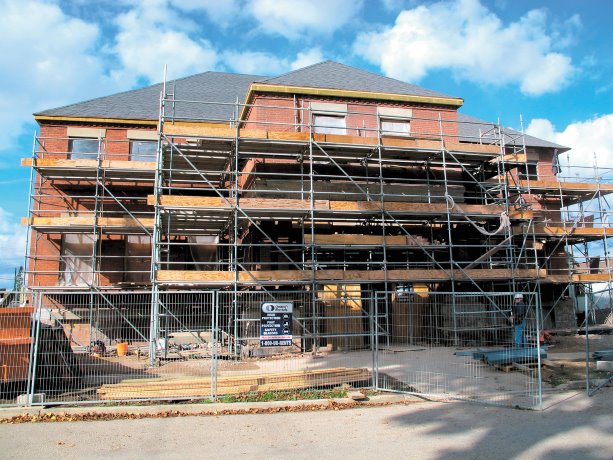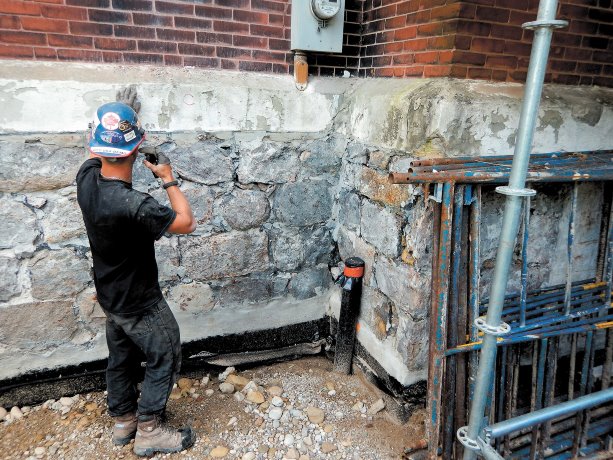After being closed since June of last year for a $3.5-million renovation and restoration, the 1903 Carnegie Library in the rural community of Palmerston, Ont. in Wellington County was officially reopened earlier this month by Warden George Bridge and other county officials.
Designed by Guelph-based Grinham Architects and overseen by construction manager Collaborative Structures Ltd. of Cambridge, Ont. the, project encompassed a major renovation of the first and second floors and basement, as well as extensive masonry repairs.
As part of its scope of work, masonry subcontractor Empire Restoration replaced all the window lintels and sills, conducted extensive brick replacement and repointing and undertook a major reparging of the stone foundation.
Approximately 1,200 deteriorated and cracked bricks on the main facades had to be replaced and numerous others needed major repointing, says Philip Hoad of Empire Restoration.
Another 400 bricks on the building’s decorative brick corbel also had to be replaced. The original historic detailing had been covered and hidden for approximately 20 years by aluminium fascia and soffit, he points out.
"Finding the right colour, texture and size took some time," says Hoad, when asked about the challenges of obtaining new brick which closely resembled the original.
That goal was achieved by sending a range of samples of available clay brick to Pennsylvania-based Watsontown Brick which provided an "Ontario sized" moulded and frog brick in an orange colour that closely matched the original.
With the demise of independent brick factories in Ontario, this style of brick is hard to source, says Hoad.
"We have to obtain it from the United States or the U.K."
Other work include removing 44 main window and 10 basement window lintels and replacing them with new pre-cast units reinforced with fiberglass rather than traditional steel rebar.
Excessive parging and cementitious over-coating of the original lintels over the decades had actually accentuated deterioration because it trapped moisture within the masonry assembly resulting in greater freeze-thaw action which, in turn, led to delamination and deterioration of the stone behind the lintels, he says.
One of the most challenging components of the project—and one that was the subject of "considerable debate"—was the best method for reparging the stone foundation. Previous parging had actually caused more damage and it was extremely difficult to clean off the residual material.
As well, the original specified parging material was designed for over-coating of concrete structures and not historic foundations, he says.
"We fought long and hard to change the material to a more natural, sympathetic and breathable material (and incidentally far less costly), finally applying multiple layers of a simple 1:1:6 mortar parging mix; which will be coated with a silicate mineral paint in the April," says Hoad, who acknowledges the role King Masonry Products performing all the mortars, parging and paint.
Empire Restoration also erected a new precast front entrance sand new wheelchair accessible side entrance, he says.
One of five original Carnegie Libraries in Wellington County and the last of those to be restored, the Palmerston branch had lost much of its character as a result of a number of renovations and had also suffered from time and weather damage, says chief librarian Murray McCabe, in outlining the reasons for the project.
Now that the revamped and revitalized library has been reopened, the community has a 7,000-square-foot barrier free facility with programs and features on the main and second floors, and the basement. Describing the basement as "only a half a basement before the renovation," it is the home of a digital media lab, says McCabe.
A long disused and deteriorating live theatre on the second floor was not saved. But the space can still be used for performances and its original frescoes have been restored by the Wellington County Museum and Archives.
"The library will be a major economic driver," says McCabe on its significance for Palmerston, which has a population of about 2,500.












Recent Comments
comments for this post are closed